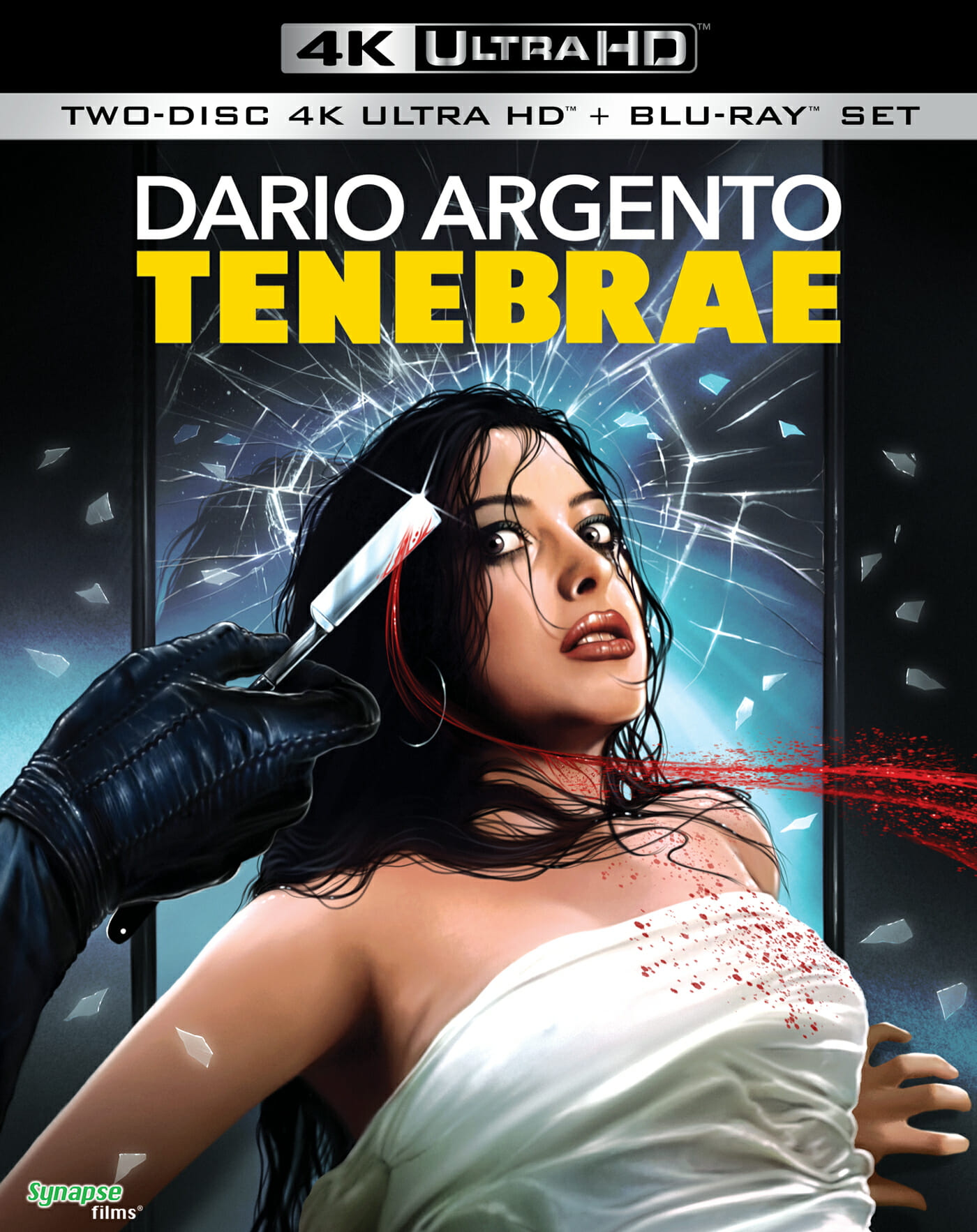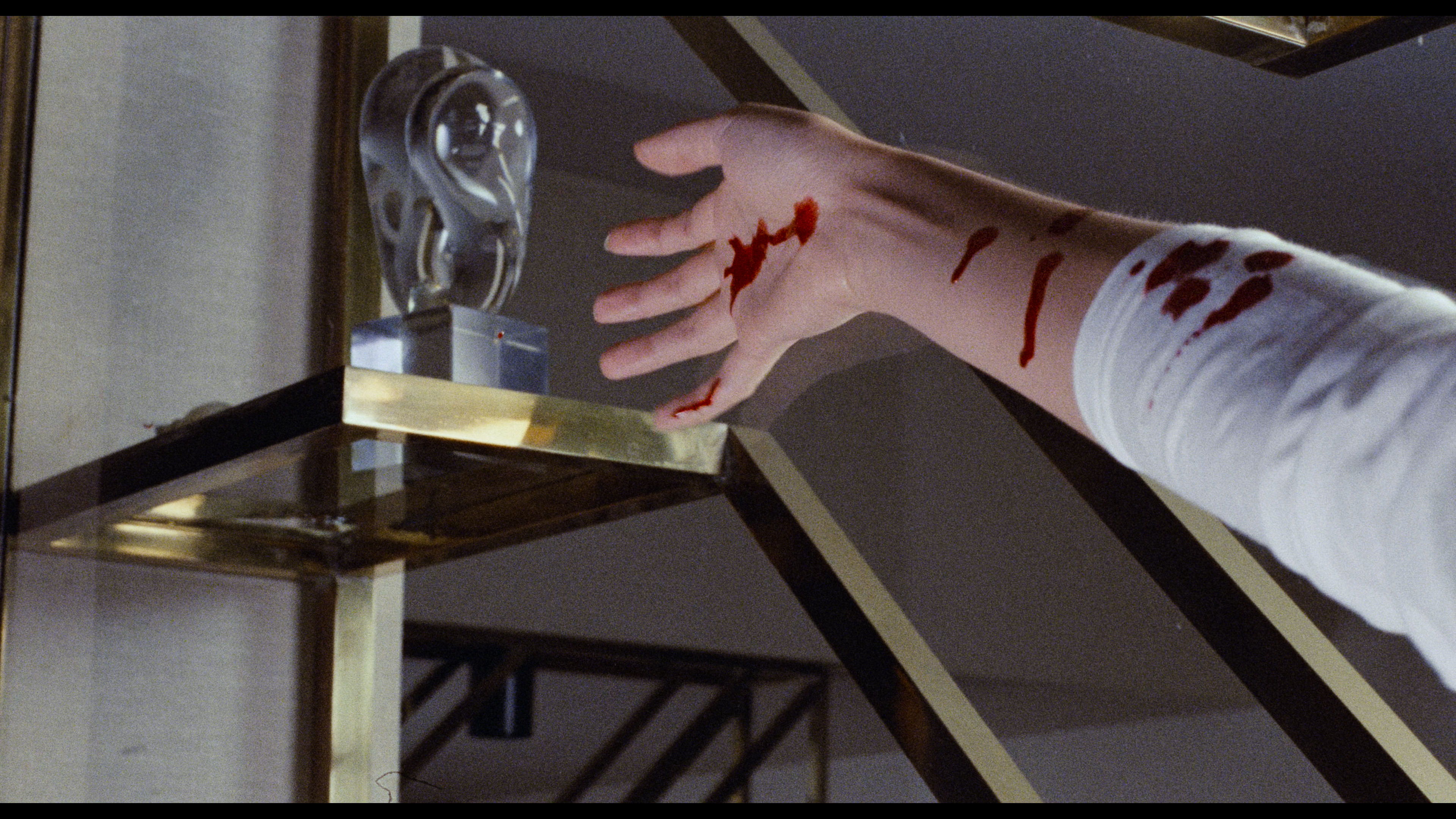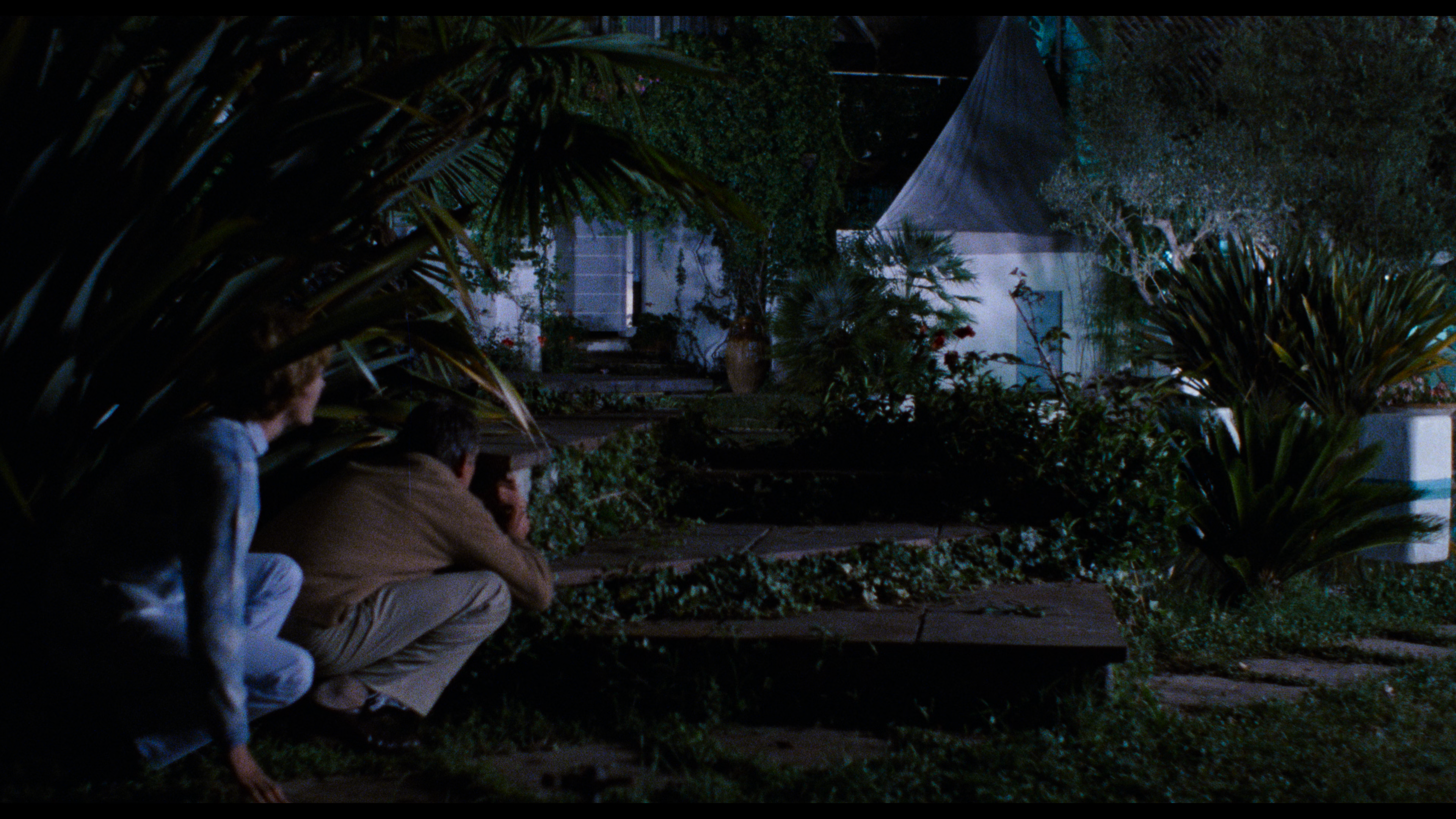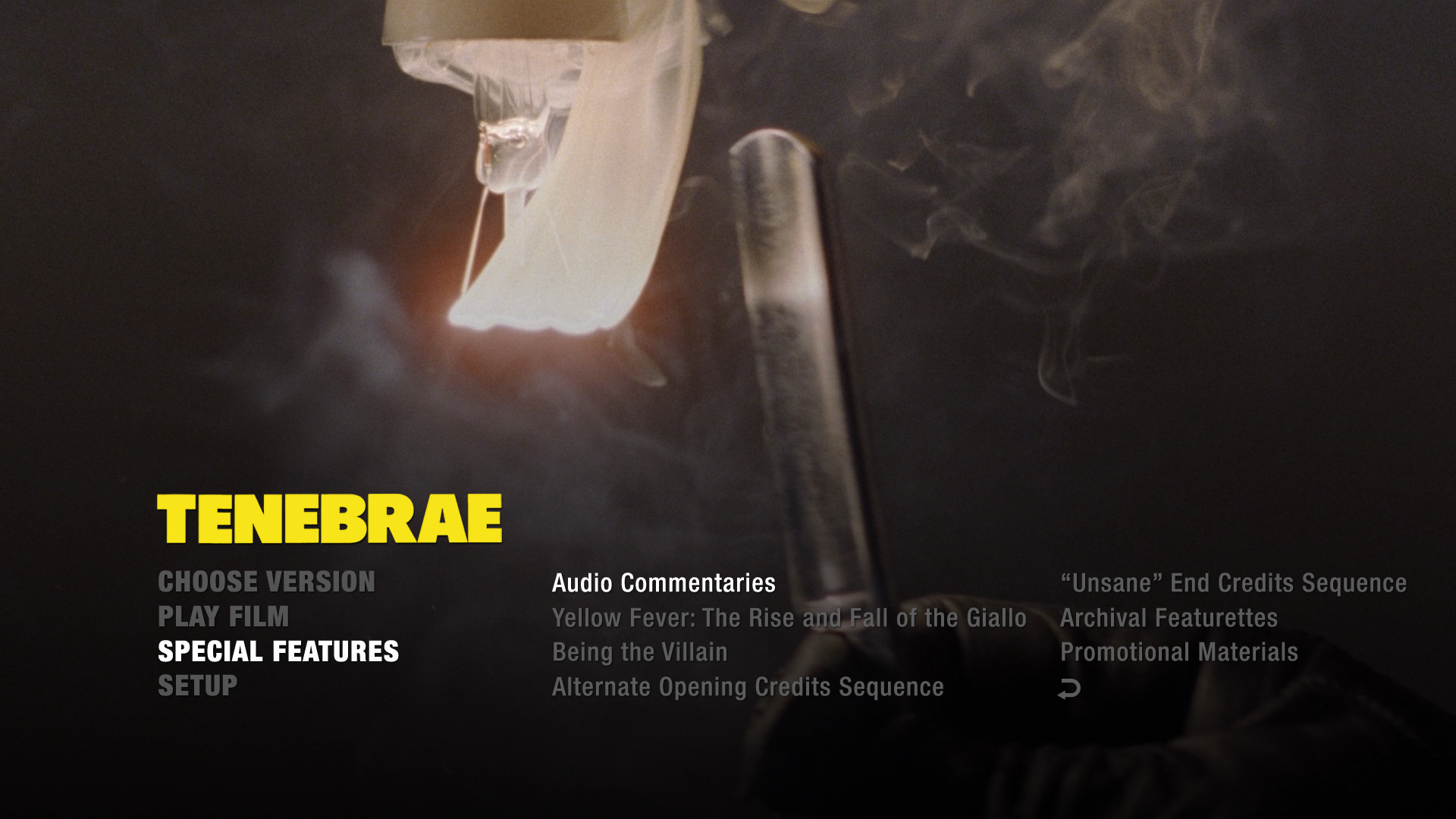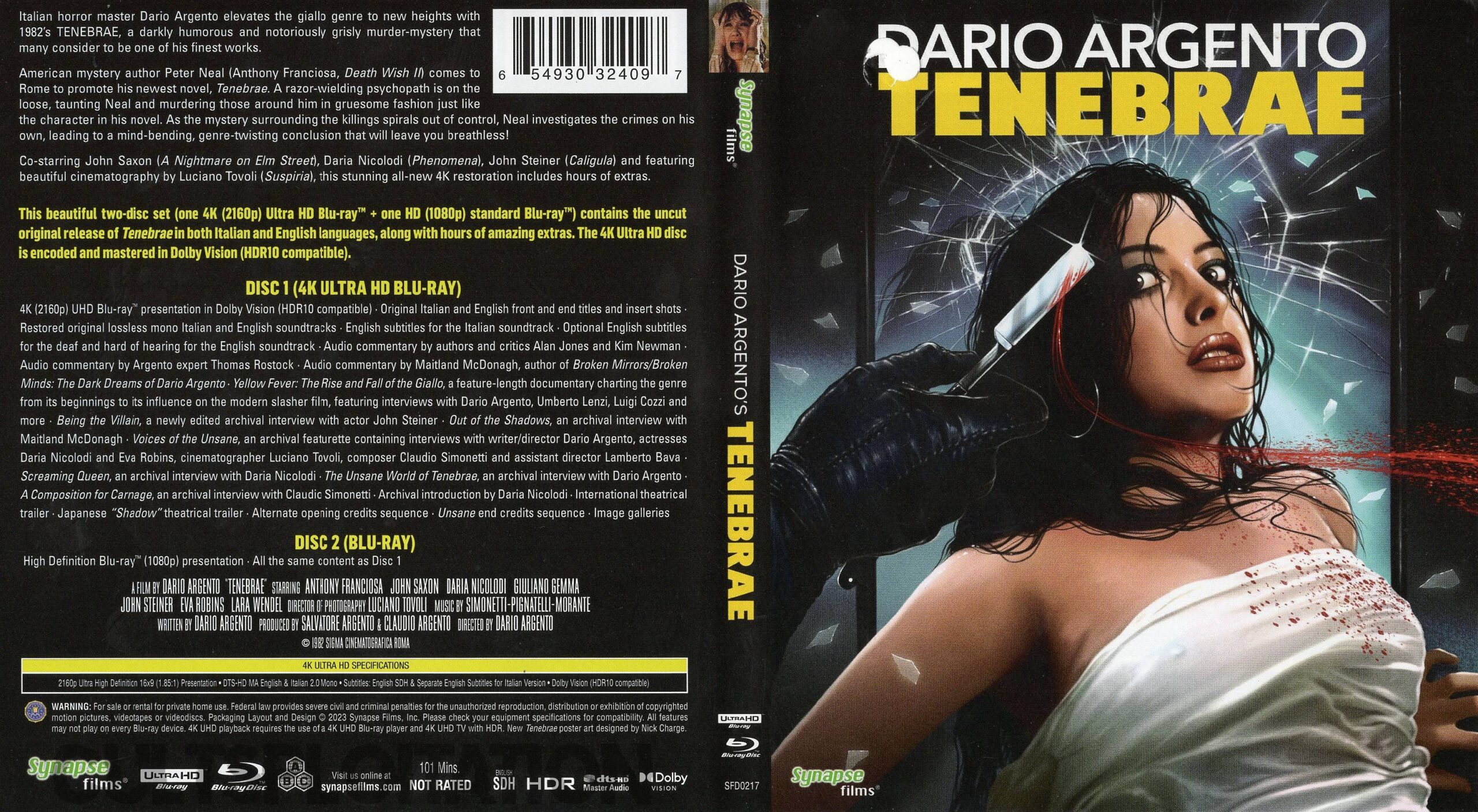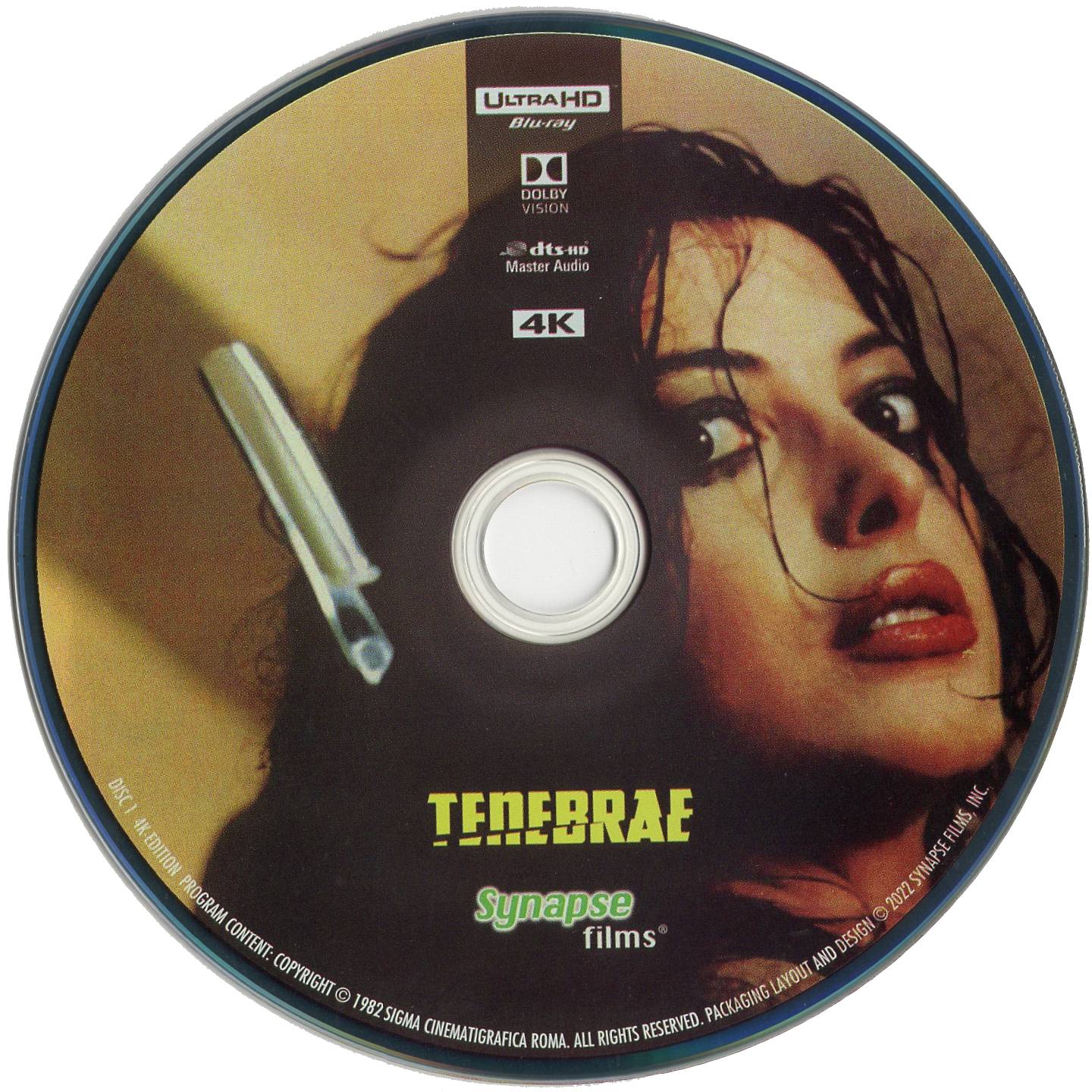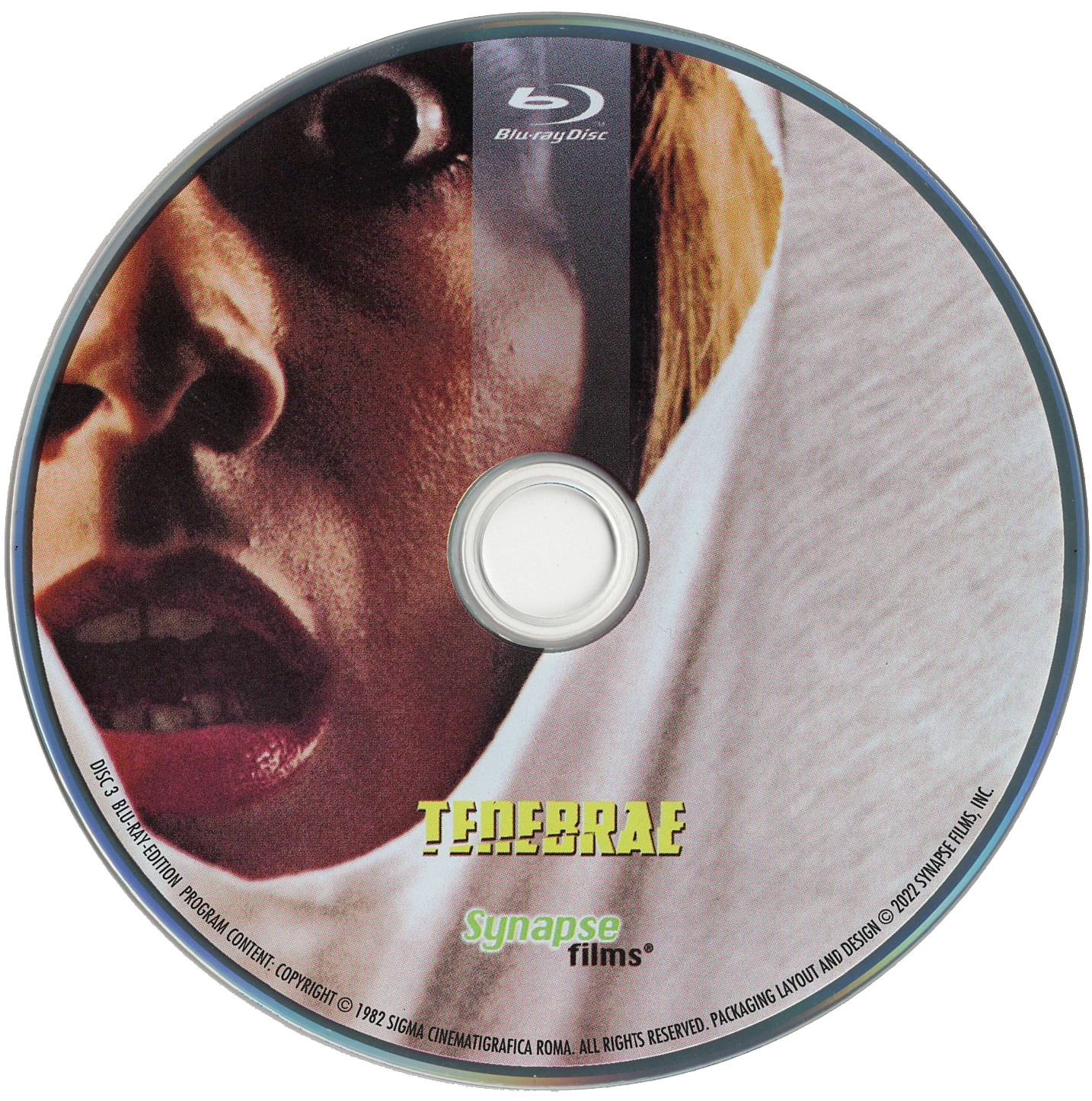
Ed. note: portions of this review originally appeared in a previous review of Tenebrae on this site.
Dario Argento is inextricably linked with the horror and giallo genres, and for good reason. Both Suspiria and Tenebrae have become standout films from his oeuvre, inspiring many rising directors with their artful direction, their surprisingly beautiful use of violence, and their eerie surrealism laced with nearly psychedelic color schemes. Tenebrae, released in 1982, features many of the same ideas that Argento utilized in his previous gialli – and, in truth, much of the same cinematography – but unlike his more chaotic plots, Tenebrae is a well-paced whodunnit caper at its most simplistic, with a heavy dose of subtext about corruption and violence in the media at its most thematic points.
Tenebrae follows Peter Neal (Anthony Franciosa), a successful writer heading to Rome after the release of his newest best-selling novel Tenebre. The book is, as many of the characters describe, quite depraved and sexist, with a horribly violent killer who murders mostly women (sound familiar?). Unfortunately, Neal’s success also leads to him becoming a target for a sadistic serial killer who copies ideas from Tenebre and then sends cryptic letters to Neal using his own words. Argento documents both the investigation into the killer and also the killer’s perspective, giving the viewer two different angles to view these crimes – one from those who are terrorized, and one from the person hunting his prey. The twisty plot involves multiple killers, a large body count, and quite a few metacritical references to the horror genre and, less explicitly, Argento’s own body of work.
Tenebrae is a great offering to the giallo genre, specifically because it is a good starting point for many viewers new to that style of cinema. Argento writes and directs the film, and here he isn’t frantically attempting to find ways to combine more supernatural elements with real human action. This is one of Argento’s most cohesive scripts, especially in the way that it deals with the plot; Tenebrae continually moves forward besides a few veiled flashback sequences, and it leaves little room for the viewer to get lost or, more importantly, for Argento to navigate through confusing subplots. Its focus on Peter Neal gives the viewer a central narrative to follow, and Argento only cuts away from him when important book-related deaths occur.
The plot is a strong point because of Tenebrae‘s comments on horror in media; the film contains a book that is basically the equivalent of a giallo film, and multiple characters – including the original serial killer, played by John Steiner – seem to find Neal’s novel a huge source of corruption for his readers. Argento uses corruption as a source for his killers, but not in the way that most viewers would expect; Tenebrae concludes that it’s not the media that corrupts, but the reader who misinterprets the meaning. For the film, the initial killer identifies with Neal’s book’s killer because they both are already mentally damaged, even going so far as to label gay people as morally reprehensible people deserving punishment. It’s forward thinking on Argento’s part, who also includes a lesbian couple in the film (designed more for titillation than progressiveness, but still surprising), two female extras holding hands in a background shot, and other fairly liberal references about abortion.
Those themes of corruption go deeper than just Neal’s novel though, as Argento works in flashbacks the killer experiences throughout the film. In truth, the editing for these moments is somewhat suspect, oddly placed in inappropriate moments, but ultimately Argento adds much more depth to his killer because of these scenes. Besides an exposition dump by Detective Germani (Giuliano Gemma) at the end of the film, Argento doesn’t reference the importance of these moments, forcing the viewer to link the killer’s depravity with an early life experience where an older woman seduced younger boys to a point where jealousy took over.
While Tenebrae is not one of Argento’s most artistic films, he certainly works in quite a bit of death linked to sex and beauty anyway. The film’s settings are grandiose, including: a crazy modernist house where the camera, through the killer’s point-of-view, works its way up the outside of the house, along the roof, and back down to the window in an eerily voyeuristic way; multiple scenes of scantily-clad women covered in blood, dead and still beautiful; viscerally red shoes; a gigantic estate walkthrough complete with pools and a completely open flat; and a final death literally caused by a giant piece of metal artwork impaling the killer. The kills aren’t as complex or surrealistic as some of Argento’s other works, but they do continually get more gruesome as the film moves along. Argento isn’t shying away from depravity, and in fact many of the characters are corrupt in some way, whether it be due to murder or something less extreme.
Tenebrae is not without its flaws. It’s a slow film, and many people will not have the patience to wade through some of Argento’s slower, but still stylish, scenes. Likewise, Argento’s script often lacks finesse in its movements through the film, especially when it comes to the problematic depiction of Peter Neal and his relationship with his fiancee Jane (Veronica Lario). Still, these are problems that are easily forgiven by those with a real interest in murder mysteries, crime capers, horror in general, and the beauty inherent in Argento’s work.
All of this to say that Tenebrae has certainly earned its spot as one of the best giallo films, and one cannot call themselves a horror fan without at least experiencing Argento’s classic. Though some will find the pacing and tone problematic – a quality of gialli that has actually come to define this form of film – the artistic merit of Tenebrae cuts through, especially thanks to Argento’s themes of corruption that elevate the movie from a simple mystery to something more cerebral.
4K UHD
Synapse Films originally released Tenebrae on 4K UHD in a limited edition 3-disc set, in collaboration with Arrow Video in the UK. This version is Synapse’s standard edition featuring a UHD and Blu-ray of the original theatrical version of Tenebrae. Previously Synapse had released a 2016 Blu-ray edition (both steelbook and standard), but this UHD has a new 4K restoration from the original camera negative. The results are significantly better than that previous Blu-ray release – you can see screenshot comparisons here. With a medium-bodied grain scale, Tenebrae features a very filmic look that does not seem treated with any DNR, and no digital artifacts or compression is noticeable either. Details are extremely strong, and most notably the image seems less stretched than the past Blu-ray allowing for slightly more information on the sides and a sharper look overall. Also different on this transfer is the color grading, which is much warmer on both the UHD with Dolby Vision/HDR 10 and the included Blu-ray; this does occasionally give skin tones a tannish appearance, but much more saturated. The HDR also provides deep black levels, clean crisp whites, and visceral green and red tones. The blood is a vibrant red, along with the various red heels on display in the movie. Both the UHD and Blu-ray discs also feature branching for both English and Italian versions of the movie. This transfer looks stunning, and is a definite improvement on the past release.
DTS-HD Master Audio 2.0 mono English and Italian audio tracks are included which are automatically selected after the film version is picked. Both sound great, though of course I prefer the English simply because it has John Saxon’s voice. No real issues were noticed on this, and Goblin’s soundtrack is on full display. English subtitles are also included.
The same extras are included on both discs, and these are all ported over from the previous Blu-ray release. Unlike the limited edition release, this standard edition version does not contain the 4K UHD Unsane cut, which is an understandable excision. However, alternate sequences as bonus features are included, as well as multiple audio commentaries, the full-length Yellow Fever: The Rise and Fall of the Giallo documentary, and a number of archival interviews.
Extra Features
DISC 1 (4K ULTRA HD BLU-RAY) – ORIGINAL VERSION
- NEW 4K (2160p) UHD Blu-ray™ presentation in Dolby Vision (HDR10 compatible) in its original 1.85:1 aspect ratio
- Original Italian and English front and end titles and insert shots
- Restored original DTS-HD MA lossless mono Italian and English soundtracks
- English subtitles for the Italian soundtrack
- Optional English subtitles for the deaf and hard of hearing for the English soundtrack
- Audio commentary by authors and critics Alan Jones and Kim Newman
- Audio commentary by Argento expert Thomas Rostock
- Audio commentary by Maitland McDonagh, author of Broken Mirrors/Broken Minds: The Dark Dreams of Dario Argento
- Yellow Fever: The Rise and Fall of the Giallo, a feature-length documentary charting the genre from its beginnings to its influence on the modern slasher film, featuring interviews with Dario Argento, Umberto Lenzi, Luigi Cozzi and more (1080p; 1:29:24)
- Being the Villain, a newly edited archival interview with actor John Steiner (1080p; 16:22)
- Out of the Shadows, an archival interview with Maitland McDonagh (1080p; 12:20)
- Voices of the Unsane, an archival featurette containing interviews with writer/director Dario Argento, actresses Daria Nicolodi and Eva Robins, cinematographer Luciano Tovoli, composer Claudio Simonetti and assistant director Lamberto Bava (720p; 17:16)
- Screaming Queen, an archival interview with Daria Nicolodi (1080p; 16:05)
- The Unsane World of Tenebrae, an archival interview with Dario Argento (1080p; 15:14)
- A Composition for Carnage, an archival interview with Claudio Simonetti (1080p; 10:05)
- Archival introduction by Daria Nicolodi (1080p; 0:13)
- International theatrical trailer (1080p; 3:14)
- Japanese “Shadow” theatrical trailer (1080p; 2:09)
- Alternate opening credits sequence (1080p; 2:14)
- “Unsane” end credits sequence (1080p; 1:51)
- Italian promotional materials (chapter breaks)
- German promotional materials (chapter breaks)
- Spanish promotional materials (chapter breaks)
- Japanese promotional materials (chapter breaks)
- US promotional materials (chapter breaks)
- Miscellaneous images (chapter breaks)
DISC 2 (BLU-RAY) – ORIGINAL VERSION
- High Definition Blu-ray™ (1080p) presentation in its original 1.85:1 aspect ratio
- All the same content as Disc 1
Verdict
Even if you own the previous Blu-ray version from Synapse, this new 4K UHD edition is worth double-dipping for excellent video quality. The features are all the same, and if you already own the UK Arrow version there’s no real difference; but for US audiences looking to own Argento’s film at an affordable price, this Synapse release is certainly a no-brainer.

